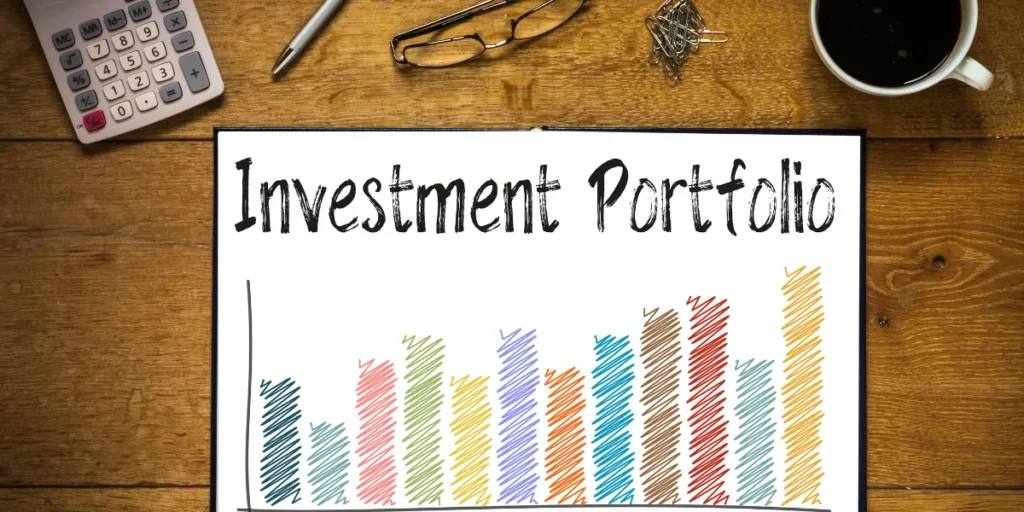Most investors dream of owning premium Australian properties. But since the 1970s, REIT Australia has made this dream a reality for everyday investors through A-REITs (Australian Real Estate Investment Trusts).
The Australian REIT sector is one of the largest and most developed REIT markets worldwide. These trusts give investors access to property portfolios in various sectors, from retail spaces and office buildings to industrial facilities. The fact that they have to pay dividends to shareholders equal to 90% of their taxable profits makes these investments even more alluring.
Regular property investments just need a lot of capital upfront. REITs are different. They let you invest in large-scale property portfolios with a modest initial investment. Buying and selling shares is made easy by the ease with which they may be traded on the stock market.
Let’s take a closer look at everything when investing in Australian REITs. We’ll help you understand their structure and build a diversified portfolio. This piece will give you the knowledge you need to make smart investment choices in this promising market.
What Are Real Estate Investment Trust Australia and Why Invest in Them?
Australian Real Estate Investment Trusts (A-REITs) let everyday investors tap into the commercial property markets without owning physical assets. These investment vehicles are businesses or trusts that own, manage, or provide funding for real estate that generates income across a range of industries.
Definition and simple structure of REITs
A-REITs trade on the Australian Securities Exchange (ASX) as pooled investments that property professionals manage. When you purchase A-REIT shares, you buy into a property portfolio that includes office towers, shopping centres, industrial facilities, and specialty assets like healthcare buildings or data centres.
How REITs generate returns for investors
A-REITs create returns in two main ways:
- Regular income – They collect rent from their property tenants and distribute it to investors as monthly or quarterly dividends.
- Capital growth – Investors benefit from higher share prices when property values increase, or assets sell at a profit.
A-REITs also provide tax benefits through tax-deferred components in their distributions. This setup helps investors delay tax payments until their marginal tax rate drops.
Benefits of REITs compared to direct property ownership

A-REITs bring several advantages over buying property directly:
- Liquidity – A-REIT shares trade quickly through brokers, unlike physical real estate, which takes months to sell.
- Lower capital requirements – You can invest in premium property assets with less money. Direct property purchases need substantial deposits and extra costs.
- Diversification—One A-REIT investment can be spread across different property types, locations, and asset classes to reduce risk.
- Professional management – Property professionals handle tenant relationships, maintenance, and strategic decisions. This removes these responsibilities from investors.
- Income reliability – The need to distribute the most taxable income gives investors a steady cash flow. This makes A-REITs attractive for income-focused strategies.
Despite their benefits, A-REITs have specific risks. These include sensitivity to interest rate changes, market volatility, and concentration risks when trusts focus on limited assets or sectors.
Setting Up Your REIT Investment Account
Starting your journey with Australian REITs requires a good brokerage account. Smart investors take time to explore platform choices, understand setup steps, and check all costs before buying their first REIT.
Choosing the right brokerage platform
Brokerage platforms differ mainly in their service levels. Full-service brokers offer investment advice, research materials, and custom investment plans but charge more for these extra services. Online brokers don’t offer recommendations but cost less, which works well for investors who know their way around the market.
Your platform choice should match your needs for:
- REIT research and data
- Live pricing (extra costs might apply)
- Mobile app options
- Access to international markets
Opening and funding your investment account
Your details and ID documents are needed for the original account setup. Setup times vary between platforms. Accounts connected to your current bank might start faster, while others take 2-5 working days.
Platforms usually give you two ways to fund your account. You can add money to your linked account or borrow through margin loans. Some brokers’ accounts let your unused money earn interest.
Understanding fees and minimum investment requirements
Australian REITs require a minimum investment of AUD 764.50, which makes them much more affordable than buying property directly.
Your investment returns depend heavily on fees. Watch out for these costs:
- Brokerage fees – Either flat rates or a percentage of trade value
- Account maintenance fees
- Research or data subscription costs
- International trading and currency conversion fees
ASX trades usually cost between AUD 15-30 per transaction. CMC Markets gives free brokerage for ASX buys up to AUD 1,528.99 daily per share.
Savvy investors keep their total fees under 0.5% of investment value. This often means making fewer, larger purchases instead of many small ones.
Selecting Your First Australian REITs

After setting up a brokerage account, your next big decision is picking the right Australian REITs for your portfolio. Smart investment choices depend on understanding the market and key performance indicators.
Top 5 REITs Australia
The Australian REIT market has several major players, each with their own focus and track record:
- Goodman Group (ASX: GMG) – A market leader in industrial properties with a global portfolio and strong e-commerce-driven growth, offering dividend yields between 1.5-2%.
- Scentre Group (ASX: SCG) – Manages Westfield shopping centres throughout Australia and New Zealand with around 4-5% dividend yields.
- Stockland (ASX: SGP) – A diversified REIT balancing residential, retail, and industrial properties, typically yielding 5-6%.
- Dexus (ASX: DXS) – Focuses on high-quality office and industrial portfolios with dividend yields of approximately 4-5%.
- GPT Group (ASX: GPT) – One of Australia’s oldest diversified REITs offering roughly 4-5% dividend yield.
Mirvac Group (MGR), Charter Hall Group (CHC), Vicinity Centres (VCX), Rural Funds Group (RFF), and Arena REIT (ARF) round out the top options.
Evaluating REIT performance metrics
New investors should watch these key indicators:
- Dividend Yield – Distribution rates typically range from 0.9% to 6.7% across different REITs.
- Discount to Net Asset Value (NAV) – REITs trading below their underlying value may represent buying opportunities.
- Free Cash Flow Margin – Higher margins indicate stronger financial health and capacity to sustain dividends.
- Lease Duration – Longer leases generally provide more stable income.
Retail vs. commercial vs. industrial REITs: Which to choose first
Each REIT type brings unique benefits for beginners:
Industrial REITs have shown impressive results thanks to e-commerce growth and supply chain innovation. These REITs achieved a remarkable 69.7% return in FY24. They offer strong growth potential but typically lower yields.
Retail REITs manage shopping centres and commercial spaces, boasting up to 98.9% occupancy rates. Income-focused investors often prefer these REITs, which typically offer 4-5% yields.
Office REITs focus on commercial office spaces but face challenges with -18.9% returns in FY24. Patient investors might find value opportunities here.
Most beginners find diversified REITs appealing because they spread risk across different property types while maintaining decent dividend yields.
Building Your REIT Portfolio Over Time

Building a successful REIT portfolio takes patience and thoughtful planning. Even with modest funds, you can make solid foundations and grow your holdings to reach your financial goals.
Starting small: How to invest with limited capital
Australian REITs are surprisingly accessible to newcomers with limited resources. Many online brokers let you start with as little as a few hundred dollars. This low barrier makes REITs perfect for anyone taking their first steps into property investment.
Here are two proven approaches that work well for beginners:
- Exchange-traded funds (ETFs) invest in multiple REITs, giving investors instant diversification and professional management in one transaction.
- Regular Investment Plans – You can build your portfolio gradually without pressure by setting up recurring investments.
Diversification strategies across REIT sectors
A balanced REIT portfolio needs smart allocation in property types of all sizes. Investing in different REIT categories helps reduce risk since performance in one sector rarely affects the entire portfolio.
Here’s what good diversification looks like:
- Sectoral balance – Spread your investments across retail, office, industrial, and specialised REITs (healthcare, data centres)
- Geographic distribution – Look beyond Australia into international markets to protect against local downturns.
- Blended approach – Mix private and listed REITs to boost overall performance
When to buy more and when to sell
Smart REIT trading requires monitoring both property fundamentals and broader economic indicators. Interest rate trends significantly affect REIT valuations, with higher rates pushing prices down.
The best times to add to your positions are:
- When REITs trade below their Net Asset Value
- When interest rates start falling
- When property valuations stabilise in specific sectors
You might want to sell when:
- Property fundamentals get worse in specific sectors
- Management quality changes drastically
- Dividend yields look unsustainable and suggest financial stress
Developing your portfolio gradually is more effective than making rushed purchases and sales in response to market fluctuations.
Conclusion – What is a Reit Australia?
Australian REITs are powerful investment vehicles that make premium property portfolios available and offer the most important advantages over direct property ownership. Market conditions and interest rates affect REIT performance, yet their core strengths stay intact. They provide liquidity, professional management and steady income streams.
Successful REIT investing requires smart platform selection and complete research of individual trusts to build a strategic portfolio. Investors get better results when they take measured approaches. They should start with diversified REITs or ETFs before expanding into specific sectors.
Patient and methodical strategies pay off in REIT investments. Investors can build strong property portfolios that deliver income and growth potential over time through regular market monitoring, balanced sector exposure, and portfolio adjustments based on fundamental changes rather than short-term market swings.
How can beginners start investing in Australian REITs?
With as little as a few hundred dollars, novices can begin investing in individual REITs or diversified REIT ETFs by creating a broking account. It’s advisable to start with low-cost index funds that hold a variety of large REITs before moving on to individual REIT investments.
What is the minimum amount required to invest in Australian REITs?
The minimum investment for Australian REITs is around AUD 764.50, making them more accessible than direct property purchases. Some REITs have share prices below this amount, allowing investors to start with even smaller amounts.
What is the minimum amount required to invest in Australian REITs?
The minimum investment for Australian REITs is around AUD 764.50, making them more accessible than direct property purchases. Some REITs have share prices below this amount, allowing investors to start with even smaller amounts.
What is the 90% rule for REITs in Australia?
At least 90% of the taxable income of Australian REITs must be paid out as dividends to shareholders. This rule ensures investors receive a steady income stream from their REIT investments.
How are REITs taxed in Australia?
REITs in Australia generally don’t pay corporate income tax on their rental income. Instead, they distribute this income to investors, who then pay tax at their tax rates. When investors sell REIT shares, any profit is liable to capital gains tax.






